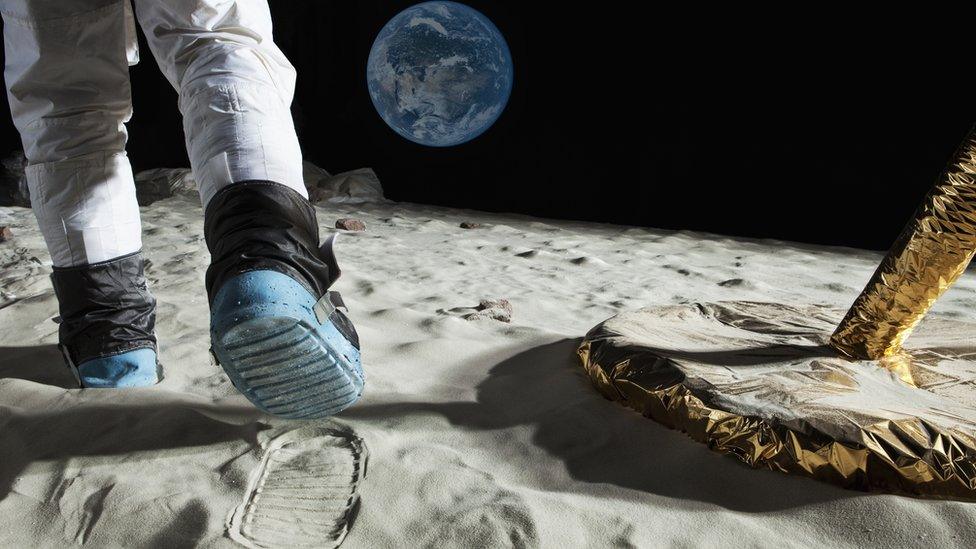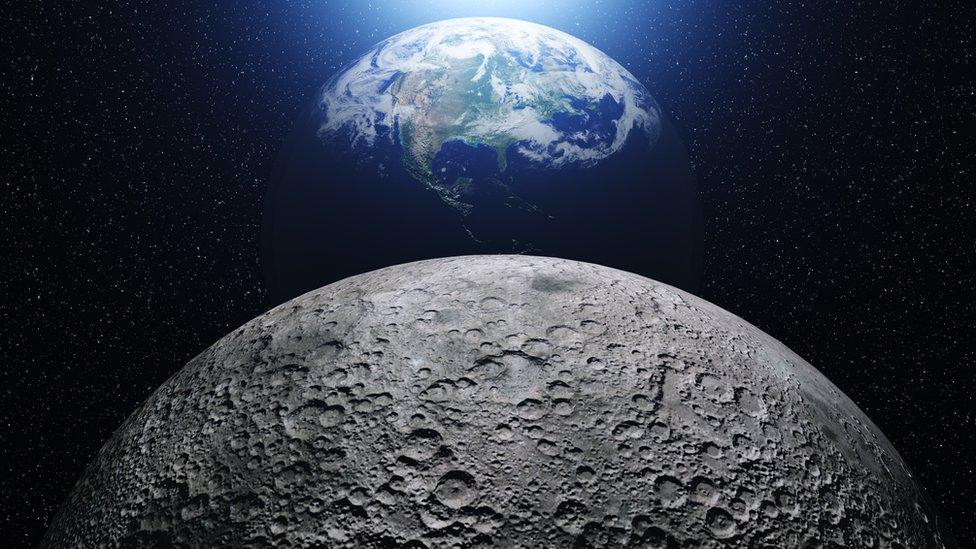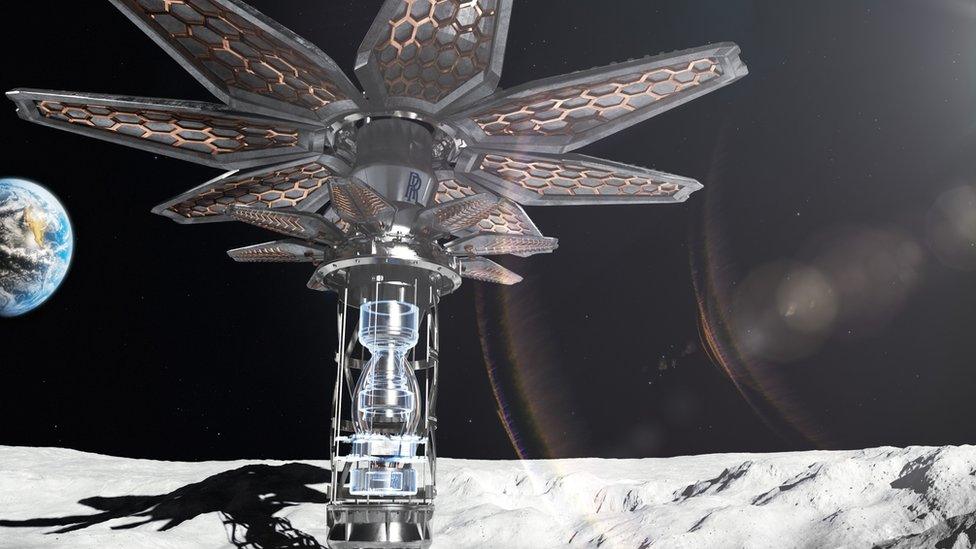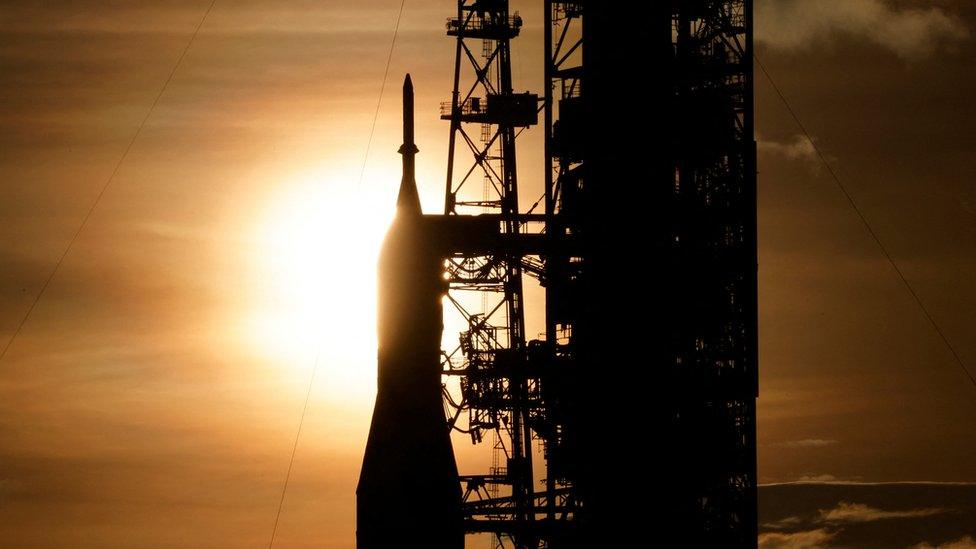Scientists concerned over human impact on the Moon
- Published
- comments

Scientists who are concerned about the impact humans could have on the Moon say they want to "prevent massive damage".
More than a hundred spacecraft have landed on the Moon's surface in the last 60 years.
Geologists from the University of Kansas in the US, say that visits to the lunar surface, either remotely or in person, means the Moon has entered a new geological era, similar to the impact humans have had on Earth.
The Moon's new era
Scientists categorise the geology of a planet or moon - such our Earth or the Moon - into time periods.
Eons are the longest periods of geologic time, and each eon is broken up into smaller chunks of time, of which some are known as epochs.
Now scientists at the University of Kansas argue missions to the surface have moved the Moon into a "lunar Anthropocene" epoch - a new era of human interference.
On Earth, the Anthropocene epoch is used by some scientists to describe the most recent period in Earth's history when human activity started to have a significant impact on the planet.

How are humans affecting the Moon?
Some scientists are concerned about ways humans could have a negative impact on the Moon, such as leaving junk on the surface.
Geologists at the University of Kansas claim that the Lunar Anthropocene age began when the USSR's Luna 2 impacted on the surface of the Moon in 1959 - the first spacecraft to reach the surface of any object in space.
At that time Russia and the countries it controlled were named The USSR - you might sometimes hear it called the Soviet Union - they were engaged in a 'space race' with the United States which led to the first person, American astronaut Neil Armstrong walking on the Moon's surface in 1969.
Learn about the history of explorations in space
More than 100 spacecraft have gone to the Moon since the first visit in 1959 and it's estimated that humans have left 500,000lbs (around 226,800 kg) of stuff on the surface - that's more than twice as heavy as a Blue Whale, the largest animal on Earth today.
In the context of the size of the Moon as a whole, that probably doesn't sound like a lot, but more and more missions are planned to arrive on the lunar surface over the next ten years and that's why experts are concerned.
"The lunar landscape will be entirely different in 50 years," says lead author Dr Justin Holcomb, from the Kansas Geological Survey.
"Multiple countries will be present, leading to numerous challenges."

Nasa's Artemis mission is due to land humans back on the surface by 2025, and it's hoped rockets launched from the Moon can go on future missions to Mars.
An American-led Nasa base is expected to begin construction at the start of the 2030s - meanwhile, China wants to be the first nation to begin building a Moon base by the late 2020s.
Not only is the Moon important for further exploration deeper into space, it is also home to valuable resources, such as titanium, lithium, silicon, and iron, which are used for all sorts tech - such as phones and batteries - and can be mined for beneath the lunar surface.
"We aim to initiate discussions about our impact on the lunar surface before it's too late," says Dr Holcomb.
- Published19 October 2023

- Published25 October 2023

- Published10 September 2023

- Published4 September 2022

